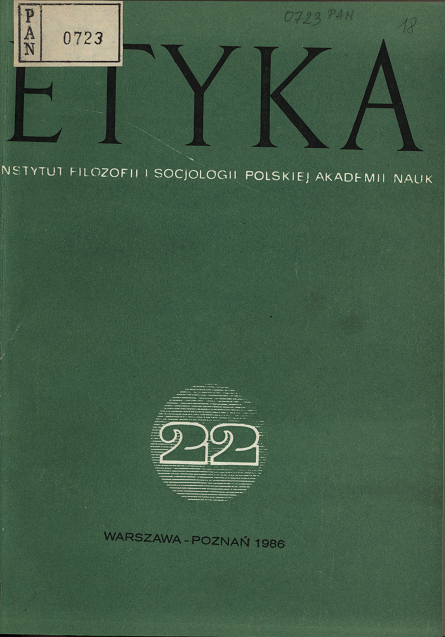Potrzeba i wartość w aksjologii marksistowskiej
DOI:
https://doi.org/10.14394/etyka.322Abstract
The analysis of the notion of need reveals two possible approaches to it — an objectivist and a subjectivist one, In the former, needs are regarded as conditions necessary for a subject’s normal functioning, existence in society, or, most broadly, for the preservation of the subject’s identity, A need is attributed to a given person on the ground of studying real links between the subject’s postulated character and external states of things, and so needs are independent of any inner condition of the given person’s wants, preferences, desires etc. In the subjectivist approach, need is regarded as the subject’s inner condition marked by a sense of want along with the concomitant motive. The notion of value may be connected with both approaches to need; value can be defined as something which meets objective needs half way, or as something that satisfies a person’s own subjective needs. Every definition of value has important consequences for the exercise of normative research. Objectivism goes along, among other theories, with absolutism, paternalism or ascetism, whereas subjectivism fits relativism, phenomenalism or hedonism. Historical materialism supplies strong evidence in support of both of these axiological approaches, However, it is the validity of the subjectivist approach that seems to be propped by more arguments. But then, subjectivism has to cope with the problem of valuating needs.Downloads
Downloads
Published
How to Cite
Issue
Section
License
Works published in ETYKA are available under the Creative Commons Attribution 4.0 International Licence (CC BY 4.0), which entails acknowledgement of authorship. Under this licence, Authors keep their copyrights and agree that their works can be used again legally for any purpose, including commercial ones, without the need to obtain previous consent of the Author or publisher. The articles can be downloaded, printed, copied and disseminated; under the condition that the authorship is indicated accordingly, together with the place of original publication. The Authors preserve their copyrights to the above-mentioned works without any limitation whatsoever.



